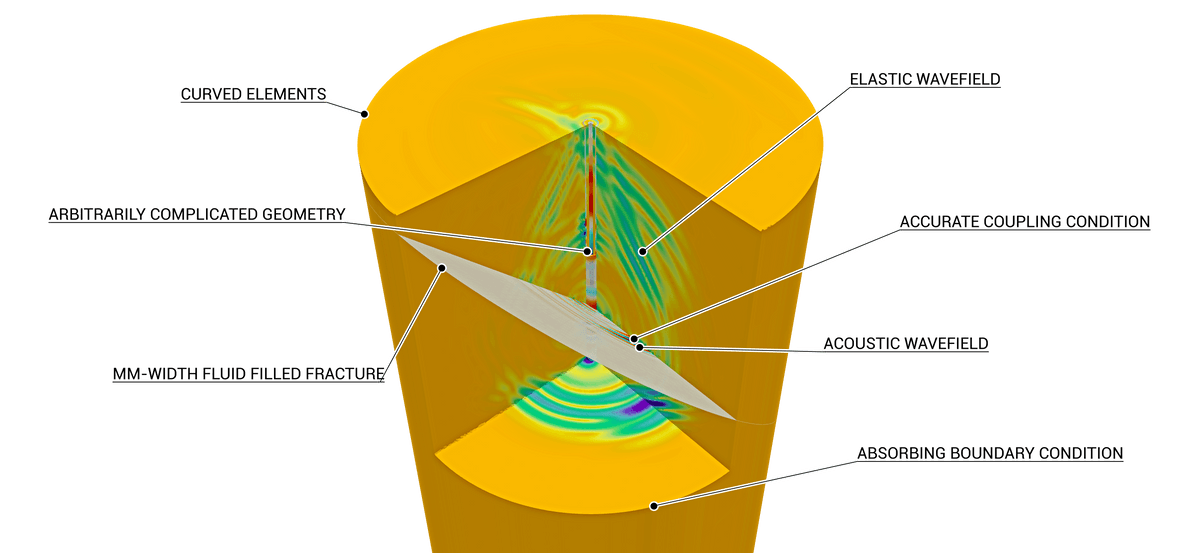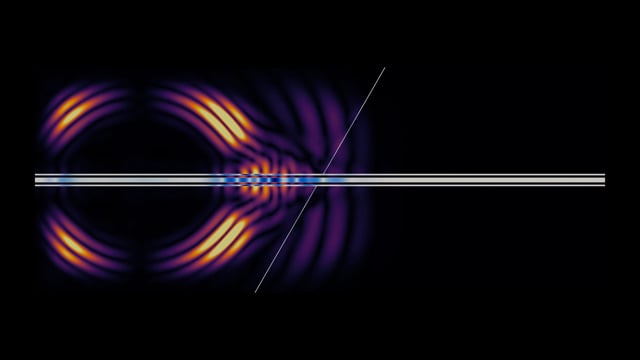Borehole Acoustics Modeling
Sonic-logging tools record acoustic signals in fluid filled boreholes. These waves, before being recorded, interact with the borehole casing, the surrounding rock formations, and other complications like fractures. Numerical simulations through digital recreations of these scenarios are mandatory to understand and act on these signals.
Common difficulties that arise in such simulations range from the accurate handling of fluid-solid interface conditions, the resolution of sub-wavelength fracture networks, and ensuring the efficiency of simulations in the presence of rapidly varying model geometry, among others.
Salvus simulates multiple wave propagation physics, including coupled acoustic / viscoelastic waves propagating through air or water-filled boreholes in two and three dimensions. These simulations provide a quantitative evaluation of subsurface materials and structures, and assist in characterizing the imprint of thin fractures.
This wavefield snapshot from a Salvus simulation highlights a few complexities our code readily handles:

In addition, the following features relevant for borehole acoustic modeling, are also supported:
- Arbitrary space-dependent anisotropic symmetry systems
- Attenuating media
- Spatially varying volumetric material properties
- Exact material discontinuities
- Simulates the full wavefield: including body, surface, and Stoneley waves.
Salvus can perform all necessary steps for borehole acoustic waveform simulations including model building, mesh generation, all the way to the actual wavefield simulations with a single cohesive and unified interface.
The following movie shows a 2-D borehole acoustic simulation. Note in particular the thin fracture and the interacting elastic and acoustic wavefields.
 Mondaic
Mondaic